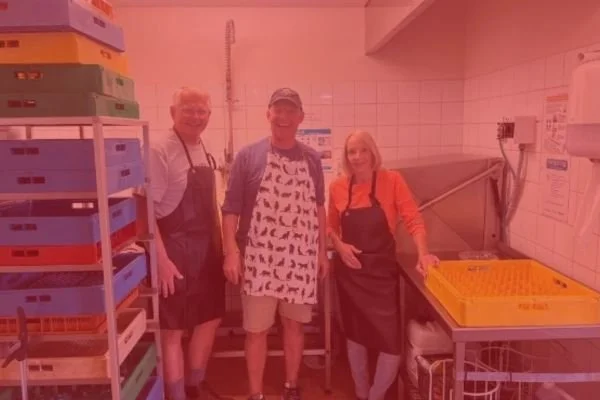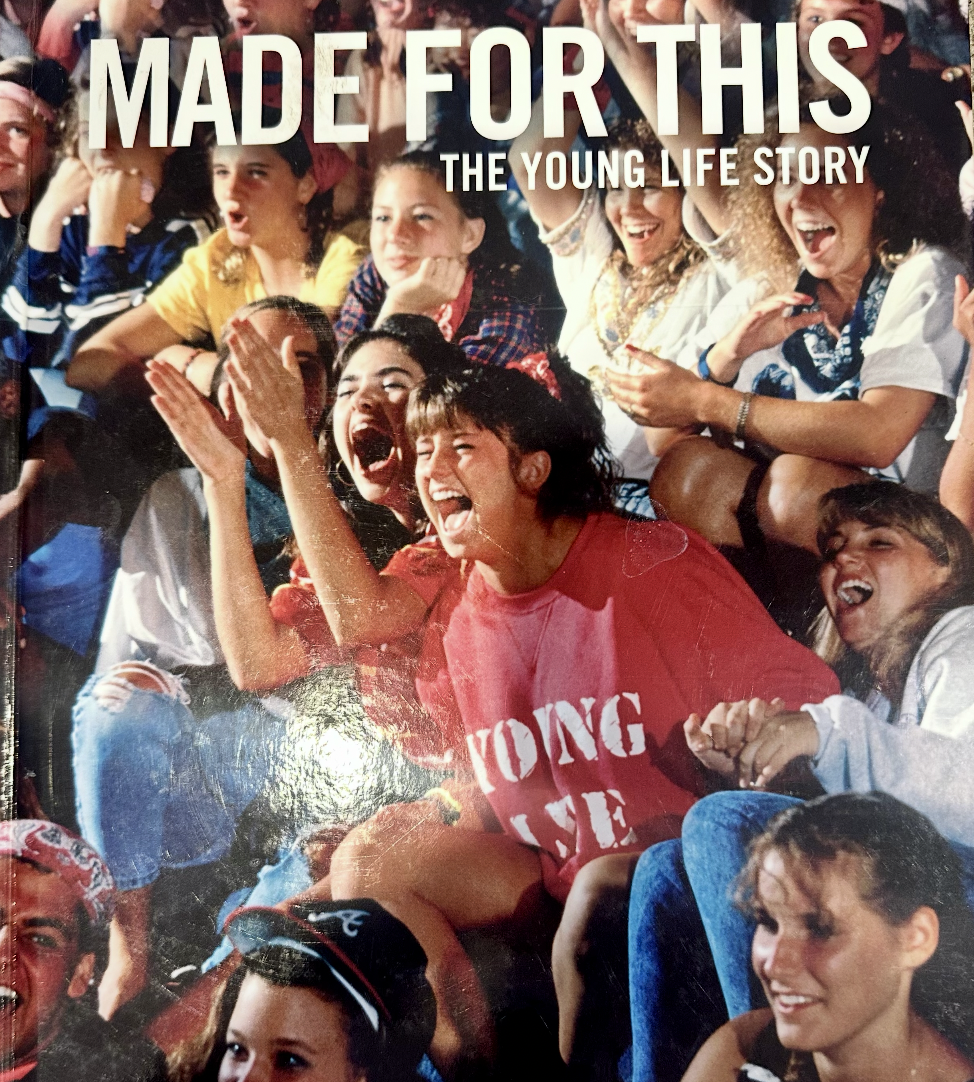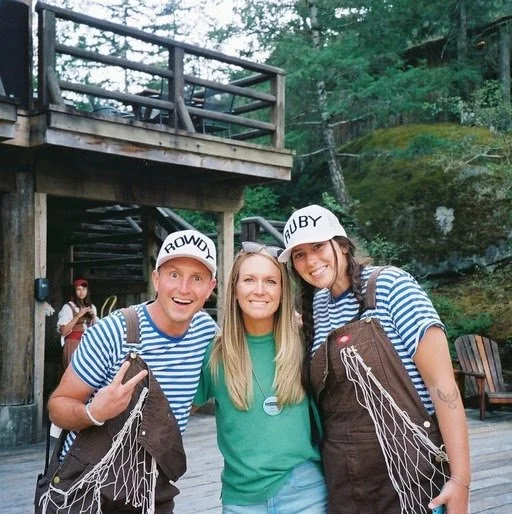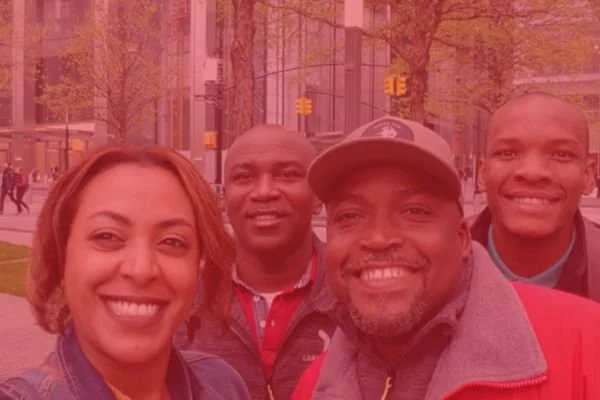A Journey Through Transition, Story, and God’s Faithfulness
The journey to Beyond Malibu started before I ever tightened my pack. In the weeks prior, each of us worked through Arthur Brooks’s From Strength to Strength—a guide to navigating life’s transitions: from achievement to wisdom, ambition to purpose, striving to abiding. For our group of thirteen men heading into the British Columbia wilderness, those ideas weren’t theoretical. Every one of us stood at some kind of threshold.
For some, it meant career transitions like retirement, new leadership roles, or reimagining their calling in the later chapters of life. For the younger men, the transitions looked different: our two early-twenties guides were stepping out of college and into leadership; the two sons on the trip were each moving from singleness to marriage.
Beyond Malibu is Young Life’s high-alpine discipleship experience tucked into British Columbia’s Coast Mountains. Most trips are designed for high school and college students and include backcountry miles paired with daily conversations about Jesus. Our crew, though, was a rare exception: an intergenerational band of fathers and sons, CEOs and generals, ministry leaders, coaches, chefs, and friends, spanning our twenties to late sixties. Marty McCarty, VP of YL Military/Club Beyond (Young Life’s ministry to military teens), dreamed up the trip. It was his fifth time at Beyond, a place he calls holy ground, and he invited a handful of close friends for one last climb in a landscape where God has met him again and again.
Day 0: Gathering at the Threshold
We met in Vancouver and boarded a floatplane that carried us north along the fjords of Princess Louisa Inlet. From the sky, the world looked like God had painted it fresh that morning—mountains, glaciers, deep forests, still water. We landed near Malibu Club, then took a boat up the inlet to Beyond Malibu base camp. That night, we received orientation, packed gear, and quietly began to leave the noise of our daily lives behind.
For many of us, especially those who had spent years leading organizations, ministries, or teams—this was the first time in a long time where someone else set the pace and the schedule. That, too, was a kind of transition.
Day 1: First Stories, First Steps
The next morning we snapped a quick photo on the dock, loaded the boat to the trailhead, and shouldered 50-pound packs. The trail tilted up right away—a steady grind through wet moss and tall evergreens, and within minutes it was obvious: we were in for a real challenge.
At our first overlook, with mountains rising around us, one of the men shared his life story. It was the first of many, and it set the tone. These weren’t superficial introductions. They were honest accounts of family, friends, loss, joy, and faith.
By the time we reached camp that night, shared dinner, and listened to the second story, something had begun. The book had given us language; the stories were giving us intimacy.
Day 2: Climbing into a New Landscape
Day two was more technical. We clawed through dark timber, punched above the clouds, and stepped into the alpine. Boulder fields forced careful footwork and slow, deliberate lines. Midday we broke it up with “snow school,” laughing as we practiced self-arrests on a slick slope.
That night, at alpine base camp, thunderstorms rolled in just as we started dinner. We crowded into the big cook tent as rain and thunder surrounded us. One by one, men shared their stories. It was my night to share as well.
Something extraordinary happened in that tent. Each story built on the last—not in competition, but in depth. The transparency of each man opened the door for the next to go even deeper. There were tears, laughter, confessions, and quiet moments of gratitude. For many of us, used to leading others, this kind of vulnerability was unfamiliar. But it was beautiful. Our guides later told us they’d rarely seen a group share like this. God’s presence was thick in that tent.
Day 3: A Shared Summit
Summit day dawned clear and crisp. We set out early, aiming for One Eye—the prominent peak you can spot from Malibu Club camp property. The alpine opened wide: glacial tarns, broken ridgelines, sky for miles. The climb was demanding, but each step felt stitched into something larger.
When we reached the summit, the view was breathtaking. Below us lay the inlet, Malibu Club perched on the water’s edge. We circled up, facing outward, and sang the Benediction. “Praise God from whom all blessings flow…” A drone captured the moment from above: thirteen men, arms around each other’s shoulders, singing at the top of the world.
Back at base camp that afternoon, the dare that earned a “no way” that morning became a unanimous yes. Sore and salt-streaked, we dropped our packs and headed straight for the icy alpine lake that bordered our campsite. The shock-cold water brought relief and laughter as one man after another dove in. That night we traded more stories under a bright, quiet sky.
Days 4–5: Descent and Marty’s Story
The descent stretched over two days. Early on we rounded a bend and met a small family of mountain goats who were quiet, watchful, and close enough to stop us in our tracks. The weather kept turning, a kind of tailored mercy: when the route tilted up over loose rock, a cool mist slid in and kept us from overheating; when we dropped back into the trees, the sun broke through and warmed the air just enough to make the miles kind. It felt like God pacing us home, moment by moment.
Halfway down the mountain we made our final camp. I’d like to say we’d gotten faster at setting up camp by this point in the trip—nope. Watching a retired general and a retired CEO fumble with their tent yet again, we sat watching, stone-faced, and delivered the line of the trip: “And this, folks, is how companies are built and wars are won.” We folded in half laughing.
On the final day of the descent, we stopped for lunch about two hours from the trailhead. By then, the rhythm of the trail felt familiar—packs off, boots dusty, the kind of tired that settles deep but feels good. It was there that Marty Mccarty shared his story. He had chosen to go last.
Marty spoke about his life and calling with the same humility and clarity that had marked the entire trip. He then shared that he and his wife, Liz, recently had decided to step down from leadership in the months ahead —news he’s since given the Club Beyond board. As he spoke, it was clear this trip was the culmination of decades of faithful service.
For me, the moment hit hard. Marty was my Young Life leader in high school. He’s the man who prayed with me to receive Jesus thirty-three years ago. He presided over my wedding earlier this year. I finally managing, through tears of gratitude, to thank him for the incredible impact he’s had on my life.
As a group, we gathered around him and prayed—thanking God for a life lived well in service to the Lord. It was simple, unplanned, and profound. In that moment, Marty embodied the heart of From Strength to Strength: moving with grace from one season to the next, trusting God with what comes after.
Reflections: From Strength to Strength
What struck me most about this trip wasn’t just the physical challenge (7,800 feet of climbing with heavy packs) or the scenery, as breathtaking as it was. It was the way our stories unfolded and intertwined.
Each night, as we listened to one another, the intimacy deepened. Leaders, fathers, sons, guides—each man brought a different perspective. Some spoke from the vantage point of retirement, looking back at decades of leadership and family life. Others stood at the beginning of their journeys—starting careers, beginning marriages, stepping into adulthood. The conversations between these generations were some of the richest I’ve ever experienced.
Thirty-three years ago my Young Life leader prayed with me to receive Christ. This summer I stood on a ridge with him praising God for a lifetime of faithful service. That’s the long view of Young Life: one generation investing in the next until the line of gratitude reaches back farther than we can see.
If that vision stirs you, there’s a place for you in that line. Maybe it’s leading a small group, serving on Committee, praying by name for kids at the school down the road, or saying yes to a Beyond Malibu–style expedition and letting God stretch your legs and your love. Start with Club Beyond (https://clubbeyond.org/get-involved-with-the-mission/) or plug into Young Life where you live (https://younglife.org/get-involved/). However you step in, you’ll help teenagers meet Jesus—and you may be surprised by how Jesus meets you, too.
Written by: Morgan Stewart









